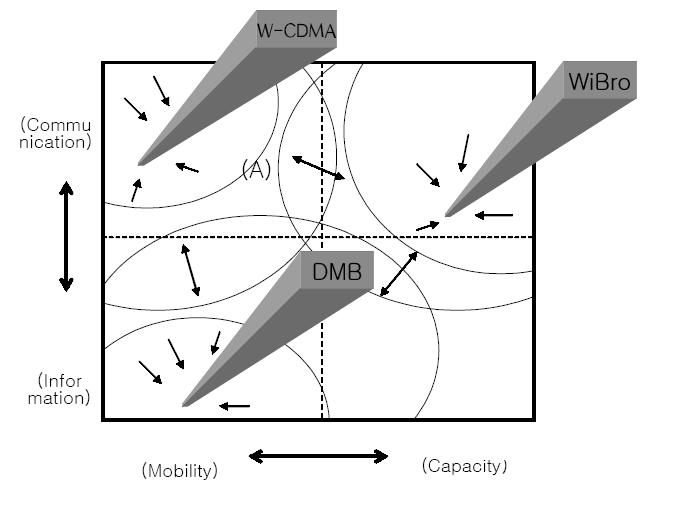5. Is the Mobility(60km/h) enough?
KT had conducted trial WiBro services in selected areas in and around Seoul since March. It first showcased a test run of the technology at the Asia-Pacific Economic Cooperation forum in Busan, South Korea last November. According to KT, users could enjoy wireless connection into Internet while on the move at speeds as high as 120 km (74 miles) per hour.
Anyway, the user's selection of services used to be based on the data-rate, mobility and coverage. But these kind of preferences are the choices of each individual preference. All user, of course, want the higher data-rate, more powerful mobility and wider coverage. But there are the trade-off in Wireless Service. It is difficule for the mobility and data-rate to coexist at once. Because of this "trade-off" in wireless service, there are product differentiation.
The Ficure of Wibro and W-CDMA shows the product differentiation; Wibro is following up the data-rate service position, W-CDMA is the mobility service position. For each service position wants the fitting CAPEX planning for their customers and customers could select their preferences between Wibro & W-CDMA.
So the mobility 60km/h of Wibro could be enough. Because the moto of Wibro at it's first phase is DSL in outdoor.
The Requirements of Wibro Services;
- Provide the way to use high speed internet service not only in home but also in outdoor → Equivalent data rate to xDSL per user
- Maximize the usage over the allocated spectrum
- Maximize the spectral efficiency
- Extend the service coverage
- Reduce the cost per bit
- Low power consumption at AT
- Faster handoff
Product Differentiation between DMB & WCDMA & Wibro
